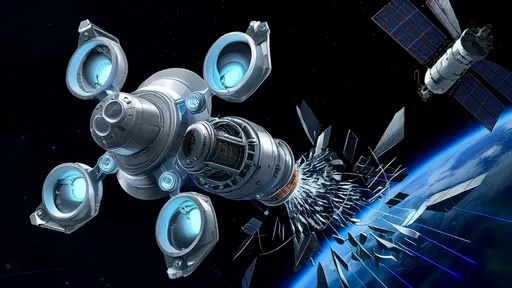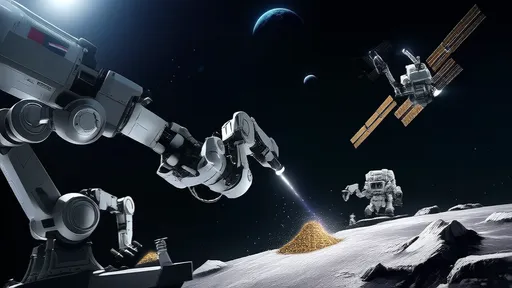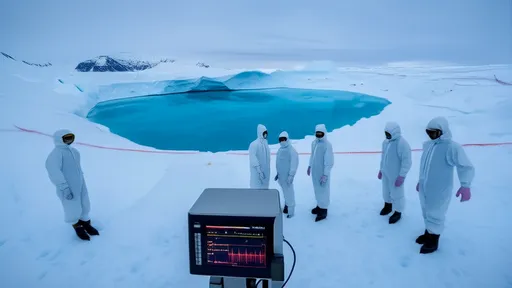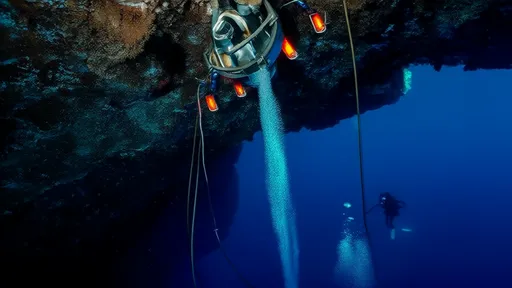The race to mine platinum from asteroids has shifted from science fiction to boardroom strategy sessions. As Earth's finite resources strain under growing industrial demand, space ventures are betting billions that the next mineral rush will happen in zero gravity. The economics of asteroid mining present a paradoxical blend of staggering potential profits and existential risks that could make or break entire corporations.
Deep-space prospectors face calculations unlike any terrestrial mining operation. A single platinum-rich asteroid measuring just 500 meters across could contain more of the precious metal than all reserves ever mined on Earth. These celestial bodies formed in conditions that allowed platinum group metals to concentrate in ways impossible on our planet. The financial implications become clear when considering that a 30-meter asteroid with high platinum concentration might hold $25-50 billion worth of material at current prices.
Launch costs remain the brutal gatekeeper of space economics. Every kilogram lifted from Earth's gravity well adds thousands to mission expenses, forcing engineers to obsess over weight reductions that would seem absurd in other industries. This harsh reality makes asteroid mining viable only through exponential improvements in reusable rocket technology and in-situ resource utilization. Companies betting on this sector must account for decade-long timelines before potential payouts, requiring patience unseen in most modern investment cycles.
The legal landscape creates another layer of complexity. While the 1967 Outer Space Treaty prohibits national appropriation of celestial bodies, it remains ambiguous about private resource extraction. This legal gray area has sparked intense lobbying efforts, with spacefaring nations crafting domestic laws to provide regulatory cover for their corporations. The United States and Luxembourg have taken early leads in establishing legal frameworks, creating jurisdictional advantages that could determine which companies dare to risk capital.
Technological hurdles separate viable operations from vaporware. Autonomous mining robots must operate flawlessly in microgravity environments where traditional excavation techniques fail. Processing plants need to function without human oversight while withstanding temperature swings from -150°C to 120°C. Perhaps most crucially, transportation systems must reliably ferry extracted materials through Earth's atmosphere - a challenge that has destroyed countless spacecraft throughout history.
Market dynamics introduce additional wrinkles. Flooding terrestrial markets with space-mined platinum could crater prices, potentially destroying the economic rationale for the very operations supplying the metal. Savvy companies are exploring closed-loop systems where space-derived materials primarily supply off-Earth manufacturing, creating an orbital economy independent of terrestrial commodity fluctuations. This approach would require simultaneous development of space-based industries - a chicken-and-egg problem of cosmic proportions.
The environmental argument for asteroid mining presents intriguing possibilities. Terrestrial platinum mining devastates local ecosystems, requiring the movement of millions of tons of ore for relatively small metal yields. Space operations could theoretically reduce Earth's environmental burden while supplying metals crucial for green technologies like hydrogen fuel cells. However, critics counter that rocket launches themselves carry significant environmental costs, and that focusing on space resources might divert attention from developing more sustainable terrestrial practices.
Military strategists quietly monitor these developments with particular interest. Platinum group metals have numerous defense applications, from jet engine components to guidance systems. A nation controlling asteroid-derived platinum could gain strategic advantages across multiple sectors. This reality ensures that what begins as commercial venture may inevitably draw government attention and potential militarization of mining claims.
Psychological factors play an underestimated role in the space mining equation. Investors must grapple with risk profiles that include total loss scenarios impossible in Earth-bound ventures. A single miscalculation could see billions vanish into the void with no possibility of recovery. Conversely, successful operations may create wealth on scales that reshape global power structures, attracting both visionary backers and speculative gamblers.
The coming decade will separate serious contenders from optimistic pretenders. As demonstration missions begin retrieving test quantities of material, hard data will replace theoretical models. Early movers enjoy potential first-mover advantages, but also bear the burden of proving an entire industry's viability. One thing remains certain: the companies that solve the puzzle of space resource economics will write the next chapter of human industrial development - whether on Earth's stock exchanges or in the accounting ledgers of future space stations.

By /Jul 2, 2025

By /Jul 2, 2025

By /Jul 2, 2025

By /Jul 2, 2025

By /Jul 2, 2025

By /Jul 2, 2025

By /Jul 2, 2025

By /Jul 2, 2025

By /Jul 2, 2025

By /Jul 2, 2025

By /Jul 2, 2025

By /Jul 2, 2025

By /Jul 2, 2025

By /Jul 2, 2025

By /Jul 2, 2025

By /Jul 2, 2025

By /Jul 2, 2025

By /Jul 2, 2025

By /Jul 2, 2025

By /Jul 2, 2025